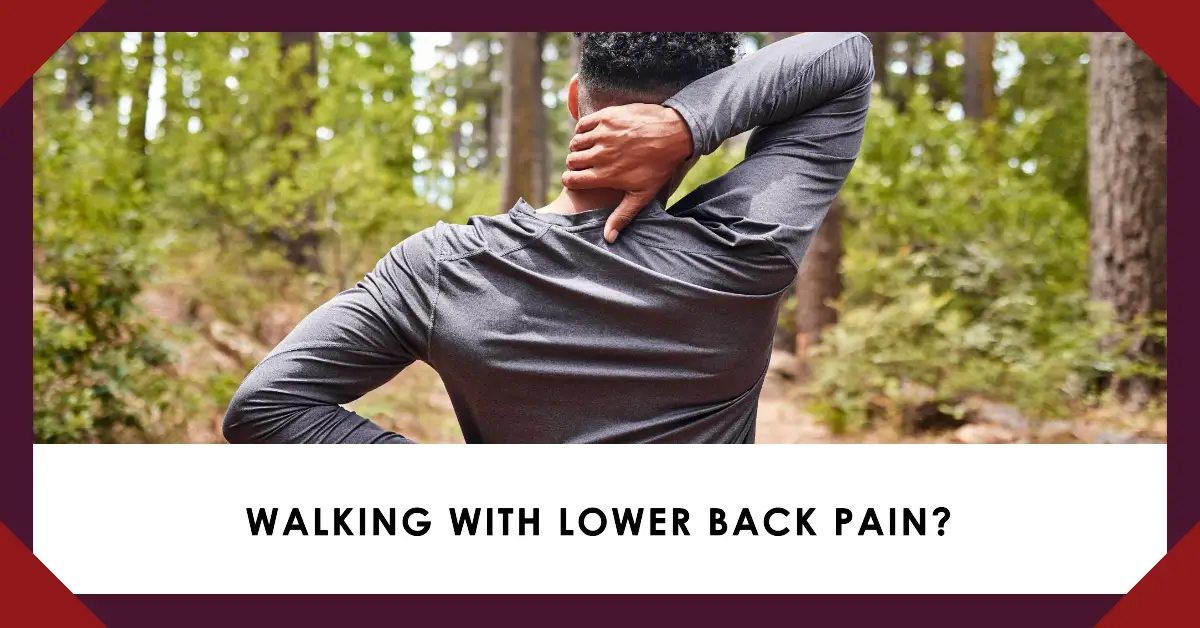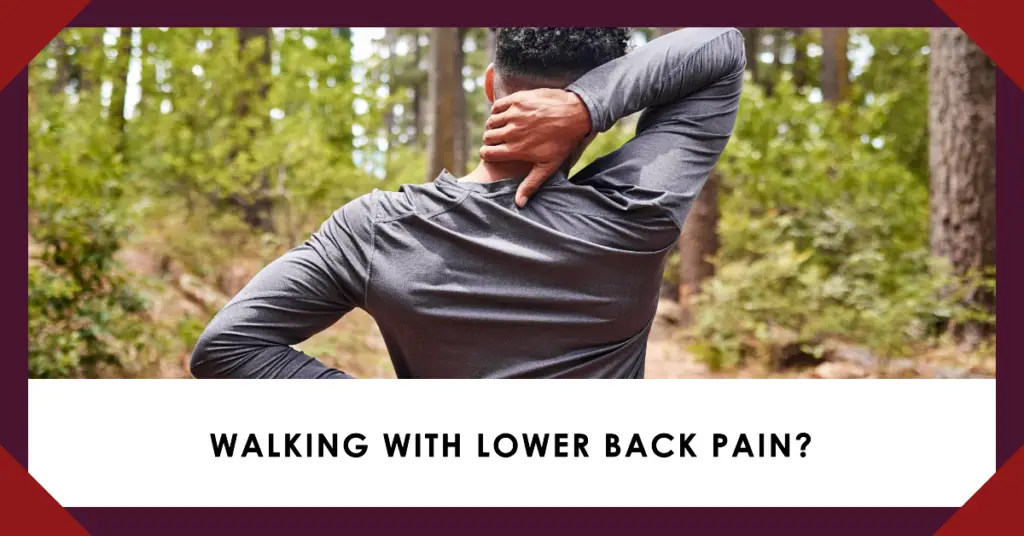
Introduction
Lower back pain is a common problem that affects people of all ages and genders. It can be caused by a variety of factors, including muscle strain, poor posture, and weight gain. In some cases, lower back pain can be caused by an underlying medical condition, such as arthritis or osteoporosis.
When lower back pain occurs while walking, it can be especially debilitating. This is because walking is a repetitive activity that puts stress on the back muscles and joints. If you experience lower back pain when walking, there are a few things you can do to manage the pain and prevent it from getting worse.

Causes of Lower Back Pain When Walking
There are a number of possible causes of lower back pain when walking. Some of the most common causes include:
- Muscle strain: A sudden or repetitive strain to the muscles in the lower back can cause pain. This can happen if you lift something heavy incorrectly, twist your back suddenly, or participate in an activity that puts a lot of strain on your back, such as running or playing sports.
- Dehydration: When you are dehydrated, your muscles can become stiff and sore, which can lead to pain. This is especially true if you are walking in hot weather or if you are sweating a lot.
- Poor posture: Poor posture can put strain on the muscles and ligaments in the back, leading to pain. If you slouch when you walk, or if you have a swayback, you are more likely to experience lower back pain.
- Weight gain: Excess weight can put extra strain on the back muscles and joints, leading to pain. If you are overweight or obese, you are more likely to experience lower back pain when walking.
- Medical conditions: Certain medical conditions, such as arthritis, osteoporosis, and scoliosis, can also cause lower back pain when walking.
Symptoms of Lower Back Pain When Walking
The symptoms of lower back pain when walking can vary depending on the cause. Common symptoms include:
- Pain in the lower back
- Pain that radiates to the hips, thighs, or buttocks
- Pain that is worse with activity
- Pain that is worse when you stand up or sit down
- Pain that is worse when you walk
- Numbness or tingling in the legs or feet
- Weakness in the legs or feet
Treatment for Lower Back Pain When Walking
The treatment for lower back pain when walking will depend on the cause. Some common treatments include:
- Over-the-counter pain relievers: Over-the-counter pain relievers, such as ibuprofen or acetaminophen, can help to reduce pain and inflammation.
- Heat or ice therapy: Heat or ice therapy can help to relieve pain and inflammation. Apply heat for 15-20 minutes at a time, or ice for 20 minutes at a time.
- Exercise: Exercise can help to strengthen the muscles in your back and improve your flexibility. This can help to reduce pain and prevent it from getting worse. Gentle exercises, such as walking, swimming, or yoga, are often recommended.
- Massage: Massage can help to relax the muscles in your back and reduce pain.
- Physical therapy: Physical therapy can help you to learn exercises and stretches that can help to relieve pain and improve your flexibility.
- Stretching: Stretching can help to improve your flexibility and reduce pain. Stretches that target the muscles in your back are often recommended.
- Yoga: Yoga can help to strengthen the muscles in your back and improve your flexibility. Yoga poses that target the muscles in your back are often recommended.
- Acupuncture: Acupuncture is a traditional Chinese medicine treatment that involves inserting thin needles into specific points on the body. Acupuncture may help to relieve pain and improve your range of motion.
- Surgery: In rare cases, surgery may be necessary to treat lower back pain when walking. Surgery is usually only considered after other treatments have failed.
Prevention of Lower Back Pain When Walking
There are a few things you can do to help prevent lower back pain when walking:
- Stay hydrated: Stay hydrated by drinking plenty of fluids, such as water, juice, or tea.
- Get enough sleep: Get at least 7-8 hours of sleep each night.
- Exercise regularly: Exercise regularly to help keep your muscles strong and flexible.
- Maintain a healthy weight: Maintain a healthy weight to reduce the amount of stress on your back.
- Lift with your legs, not your back: When you lift something heavy
- Wear supportive shoes: Wear shoes that provide good arch support and cushioning.
- Use good posture: When you walk, keep your back straight and your shoulders relaxed.
- Avoid walking for long periods of time without taking breaks: If you feel pain, stop walking and rest for a few minutes.
- Strengthen your core muscles: Strong core muscles can help to support your back and reduce pain.
- Stretch your back muscles: Stretching your back muscles can help to improve flexibility and reduce pain.
- Massage your back: Massage can help to relax the muscles in your back and reduce pain.
- Avoid activities that aggravate your pain: If there are certain activities that make your back pain worse, avoid them.
- See a doctor: If your back pain is severe or does not improve with home treatment, see a doctor to rule out any underlying medical conditions.
In addition to the above, here are some other tips that may help to prevent lower back pain when walking: - Warm up before you start walking: Warming up your muscles before you start walking can help to prevent injuries.
- Cool down after you finish walking: Cooling down your muscles after you finish walking can also help to prevent injuries.
- Walk on a level surface: Walking on a level surface can help to reduce the amount of stress on your back.
- Avoid walking on uneven surfaces: Walking on uneven surfaces can increase the risk of injury.
- Walk in a straight line: Walking in a straight line can help to maintain good posture and reduce the risk of injury.
- Avoid walking with a heavy backpack: Carrying a heavy backpack can put extra stress on your back.
- Avoid walking when you are tired: Walking when you are tired can increase the risk of injury.
If you experience lower back pain when walking, it is important to see a doctor to rule out any underlying medical conditions. However, even if there is no underlying medical condition, there are a number of things you can do to manage the pain and prevent it from getting worse. By following the tips above, you can help to keep your back healthy and pain-free.




